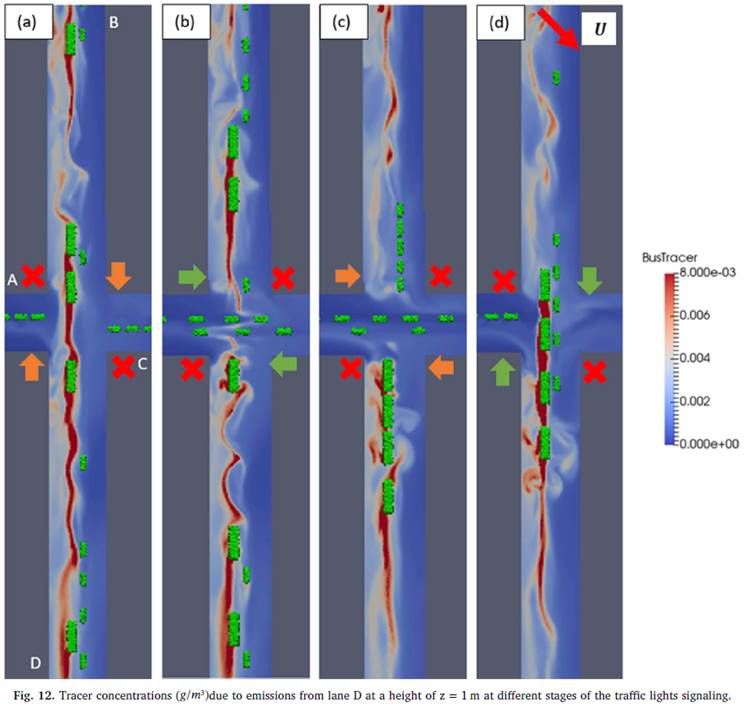Local scale urban modelling (Fluidity, ADMS)
While within the IAU we primarily consider the national or regional scale, and therefore use models that operate at these scales, we also recognise the need to understand air pollution dispersion and exposures across different scales. This understanding can then inform our national scale modelling, highlighting particular uncertainties or processes that are not necessarily captured at national scale. In addition to the use of established regulatory models such as ADMS, we also use detailed CFD modelling of dispersion in urban environments.

An example of this is the work undertaken as part of the MAGIC project. The large eddy simulation software Fluidity was used to simulate the exposure of pedestrians to vehicle emissions at very high temporal and spatial resolution, i.e. down to 1 second and 1 metre. At its first instance this work showed how the interaction of the street-level airflow with moving vehicles can significantly affect the dispersion of pollutants along the street, and as a result the exposure of pedestrians (Woodward et al 2019). This modelling was then linked to a case study centred at a junction in south London, demonstrating that high temporal resolution modelling is required to accurately characterise the exposure of pedestrians at street level (Woodward et al 2022, 2023). It also demonstrated how the proximity of pedestrians or cyclists to vehicle tailpipes is a significant factor in their exposure, and therefore streets designed to separate vehicles from cyclists and pedestrians may be an effective way of reducing exposures.
Relevant Publications
- Woodward H, Stettler M, Pavlidis D, Aristodemou E, ApSimon H, Pain C. A large eddy simulation of the dispersion of traffic emissions by moving vehicles at an intersection, Atmospheric Environment, 2019; 215, https://doi.org/10.1016/j.atmosenv.2019.116891
- Woodward H, Schroeder AK, Le Cornec CMA, Stettler MEJ, ApSimon H, Robins A, Pain C, Linden PF. High Resolution Modelling of Traffic Emissions Using the Large Eddy Simulation Code Fluidity. Atmosphere. 2022; 13(8):1203. https://doi.org/10.3390/atmos13081203
- Woodward H, Schroeder A, de Nazelle A, Pain CC, Stettler MEJ, ApSimon H, Robins A, Linden PF. Do we need high temporal resolution modelling of exposure in urban areas? A test case. Sci Total Environ. 2023 Aug 10;885:163711. https://doi.org/10.1016/j.scitotenv.2023.163711
For staff
If you are a new CEP staff member and would like to be included on the research webpages, or would like to amend your existing details, please submit this form (login required- only works for members of CEP).